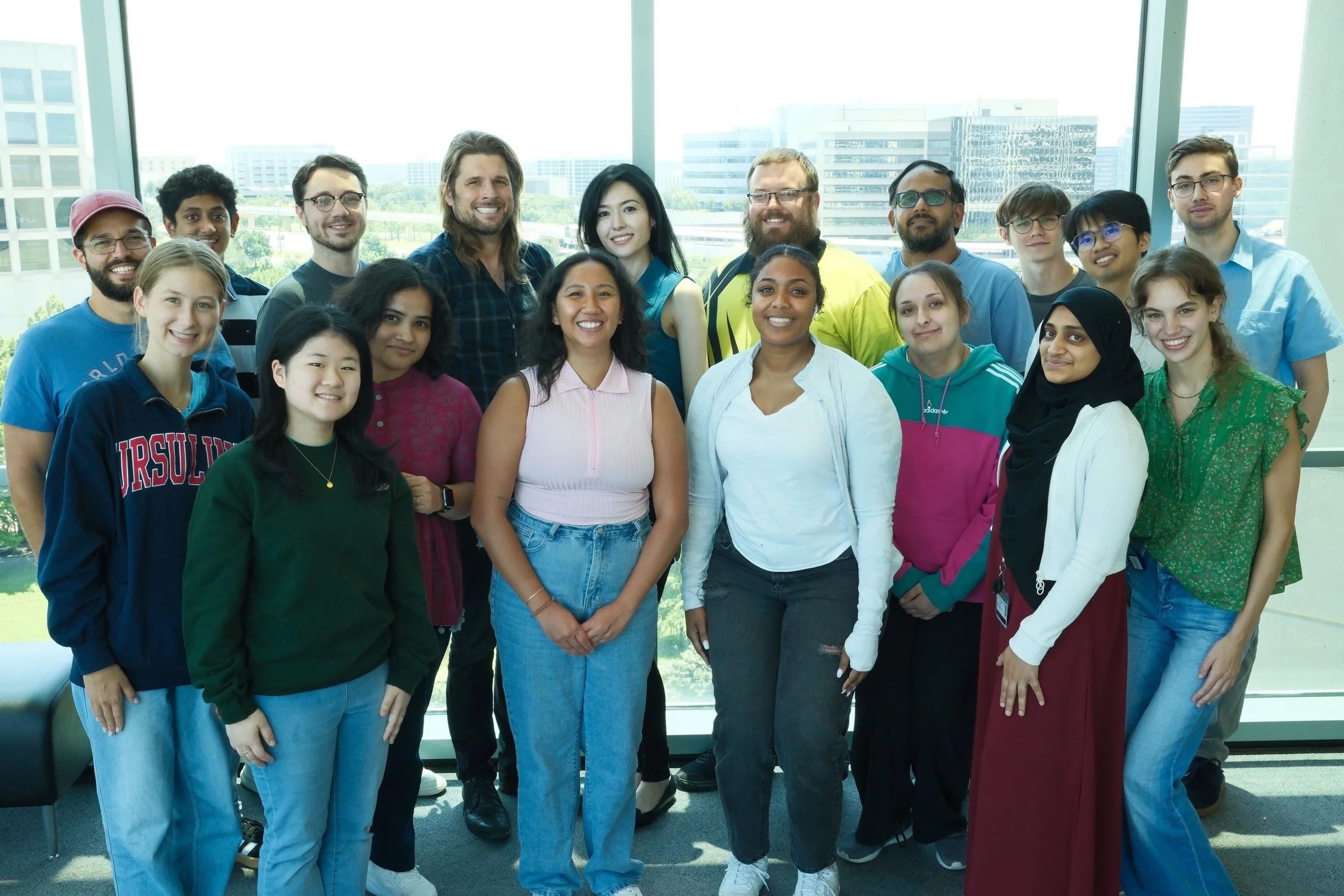
Disentangling Molecular Networks in Health and Disease
WHEN GOOD BIOLOGY DOES BAD THINGS. Our lab at UT Southwestern illuminates how failures in RNA and protein homeostasis trigger diseases of aging, from ALS and Alzheimer’s disease to myopathies and beyond! Our fundamental cell biology studies are performed in close collaboration with the structural biology lab of Sarah Shahmoradian. The Sanders Lab’s unique cell models of RNA/protein aggregation integrate with the Shahmoradian Lab’s cutting-edge cryo-EM/ET and cryo-CLEM technologies to declare war on neurodegenerative and neuromuscular diseases!
SCIENTIFIC PHILOSOPHY. Our research is diverse by necessity. We are passionate advocates for curiosity-based inquiry, in which hypotheses, independent of past successes (or failures), are rigorously tested using question-dependent methodologies. In unfortunate circumstances, expectations are validated and incremental progress is made. In more opportune times, naiveté, wonder, and fleeting self-confidence coalesce to break free of working models, and new scientific frontiers present themselves. In these rare moments of (perceived) clarity, the initial line of inquiry is immediately abandoned in favor of the beautiful unknown. Although deviations from the scientific method can lead to failure, they are the sparks of inspiration that drive discoveries and keep cynical careerism at bay. Often, roadblocks present themselves. No worries: we fall back on the heavenly embrace of open communication and collaboration. Ideally, hurdles are overcame and lifelong friends are made. Fools argue that such transparency leads to “scooping”. These individuals are to be pitied. We are in this together. Let the cynics expire. Momentum—always and forever!
The Shahmoranders—photographed in their natural habitat above—are recruiting at all levels. If you have an insatiable thirst for destroying dogma (without tamoxifen or single-cell sequencing), please reach out to David and/or Sarah to discuss career opportunities and/or collaboration!
See Projects and Publications for details on current and past work!
FULL STOP. See Videos if you want to get straight to the good stuff.
REACH OUT! We are always looking for collaborators! Email David! Or send David a message on your preferred networking platform if you have something interesting to say. He might have something interesting to say in response. He might not.
